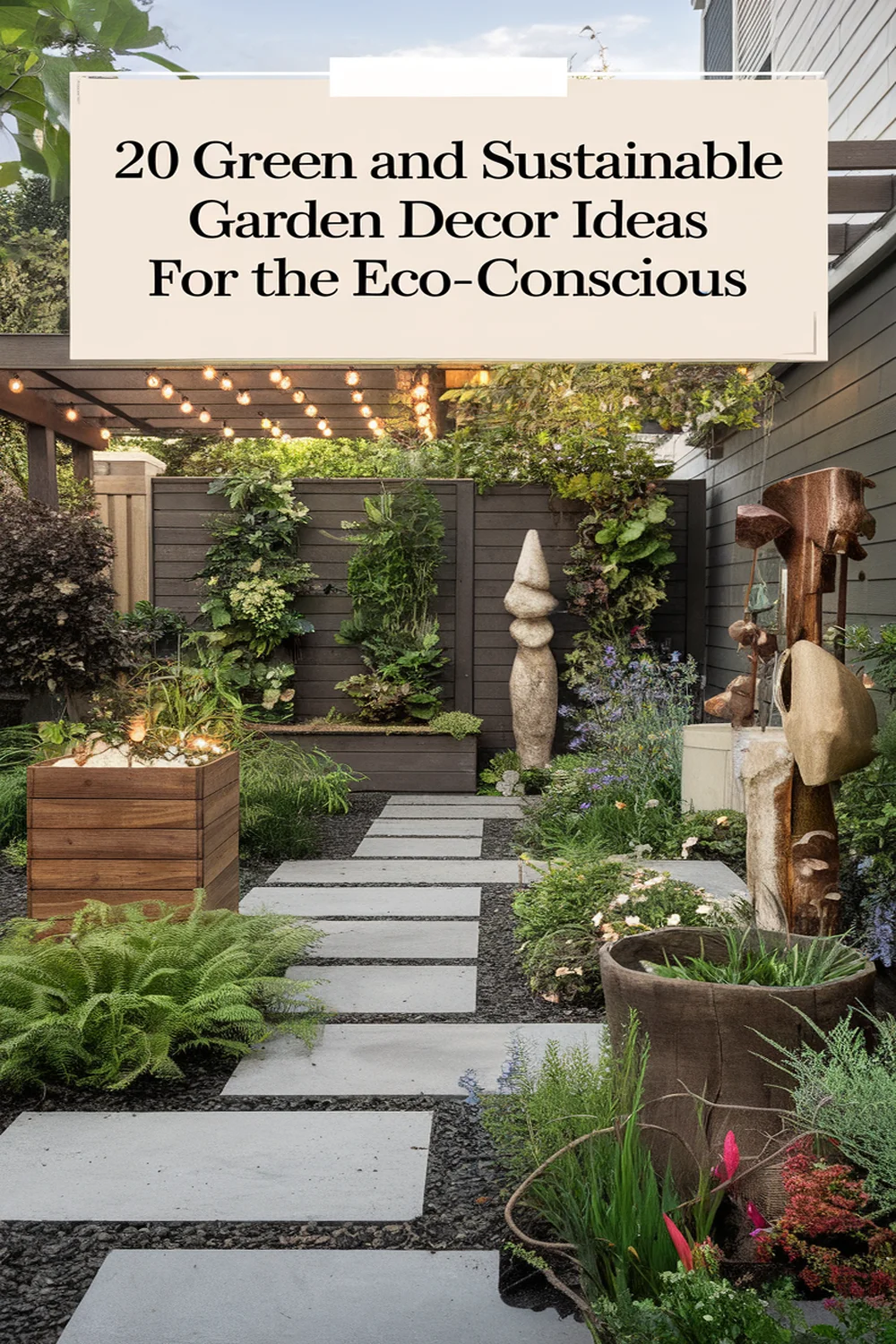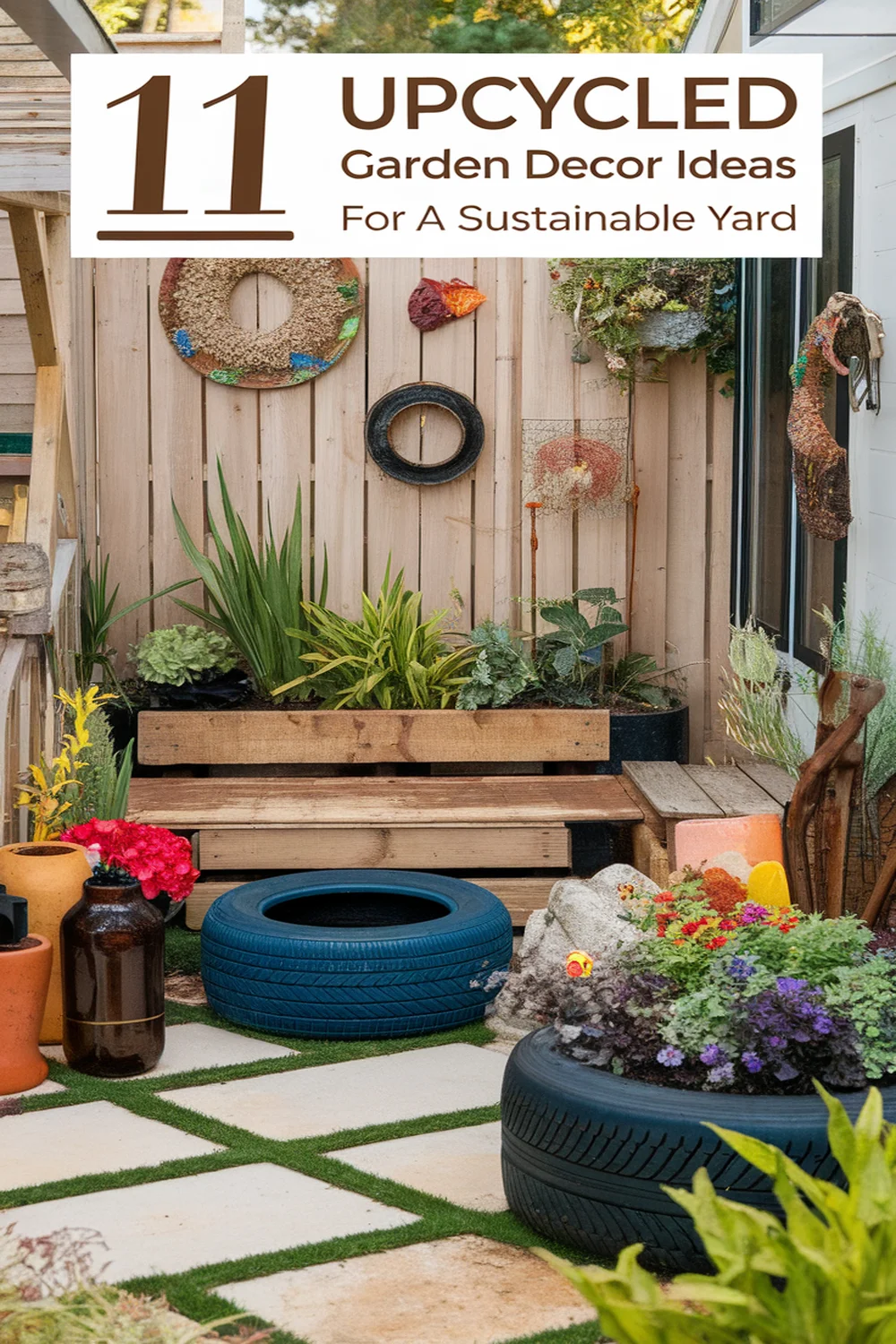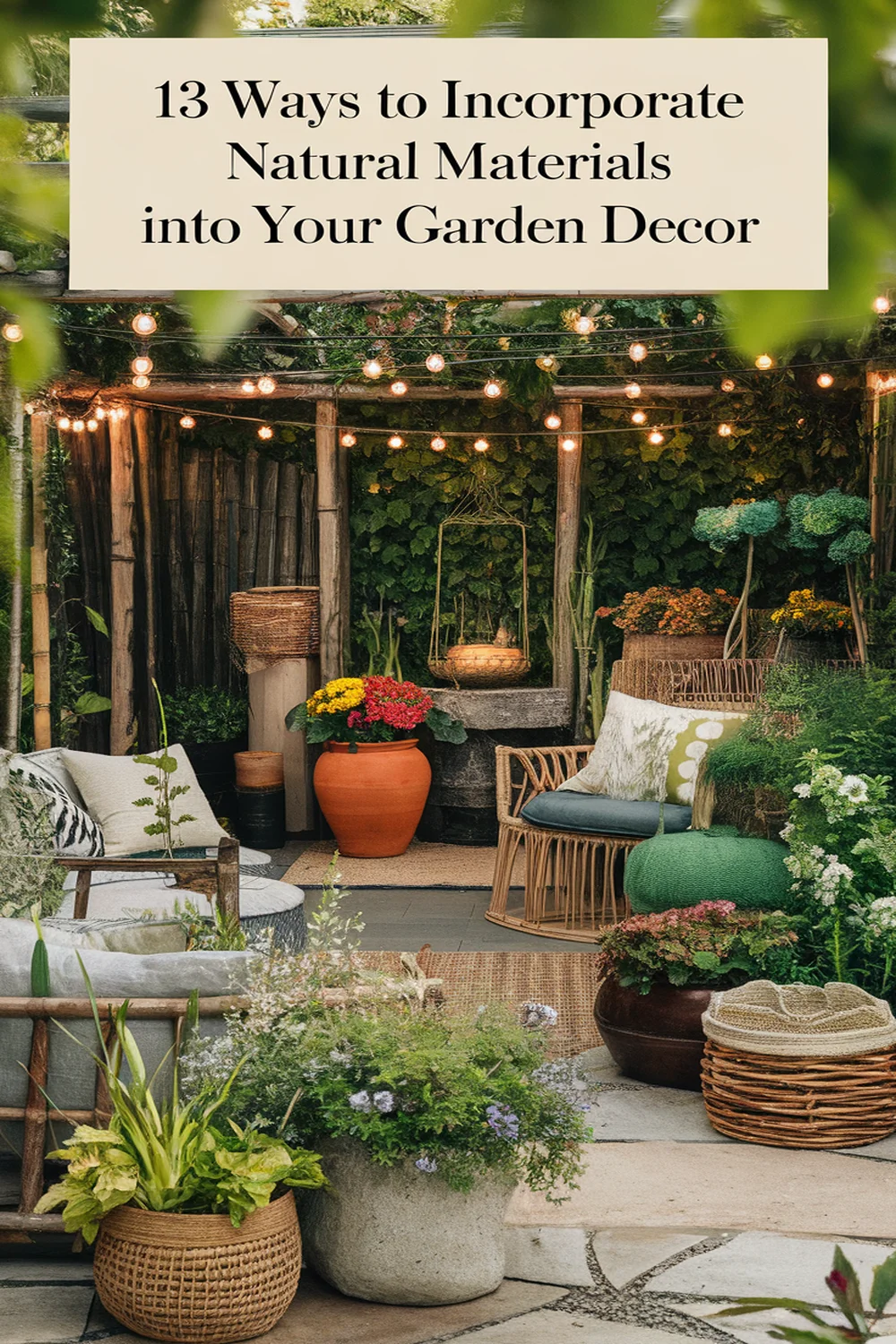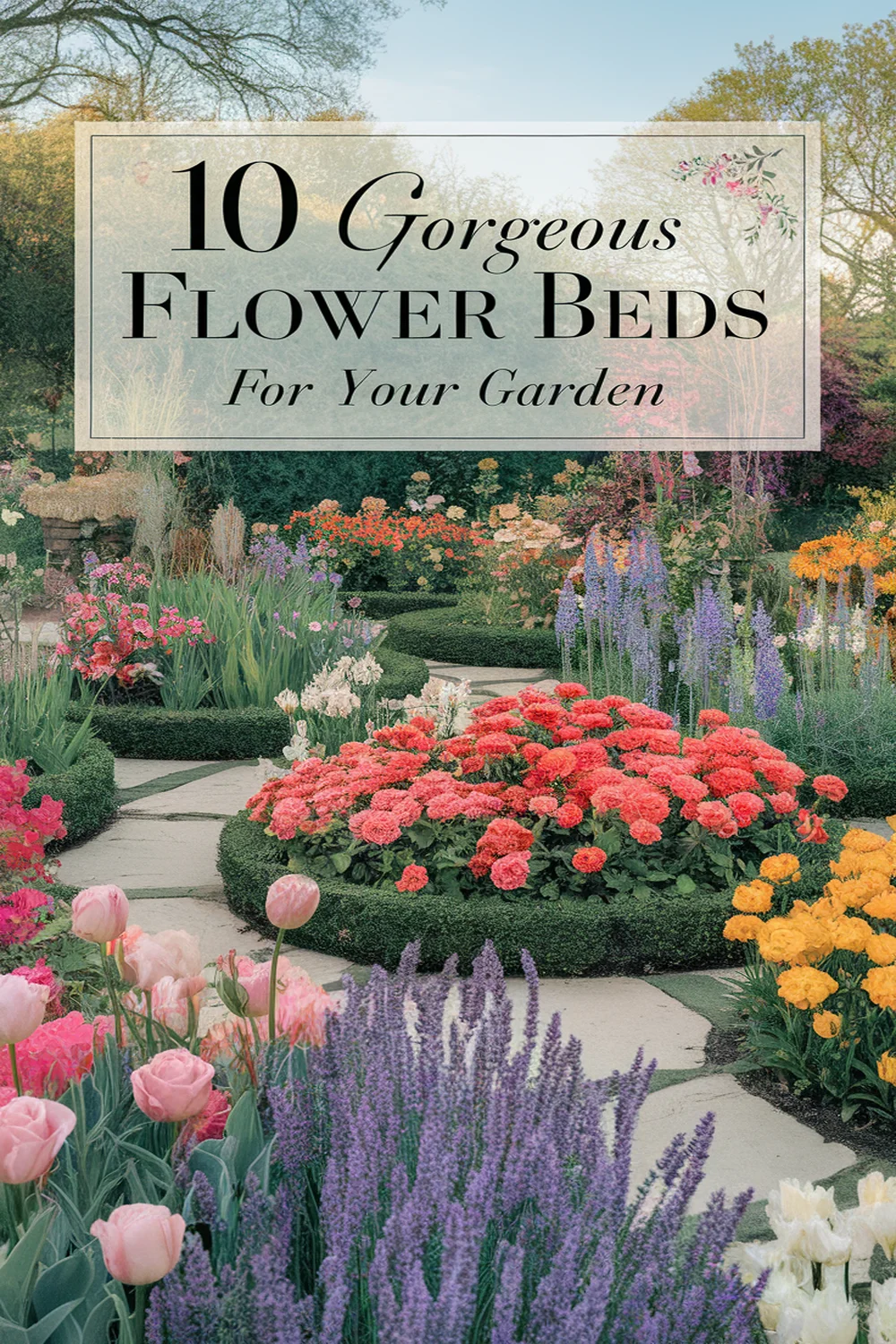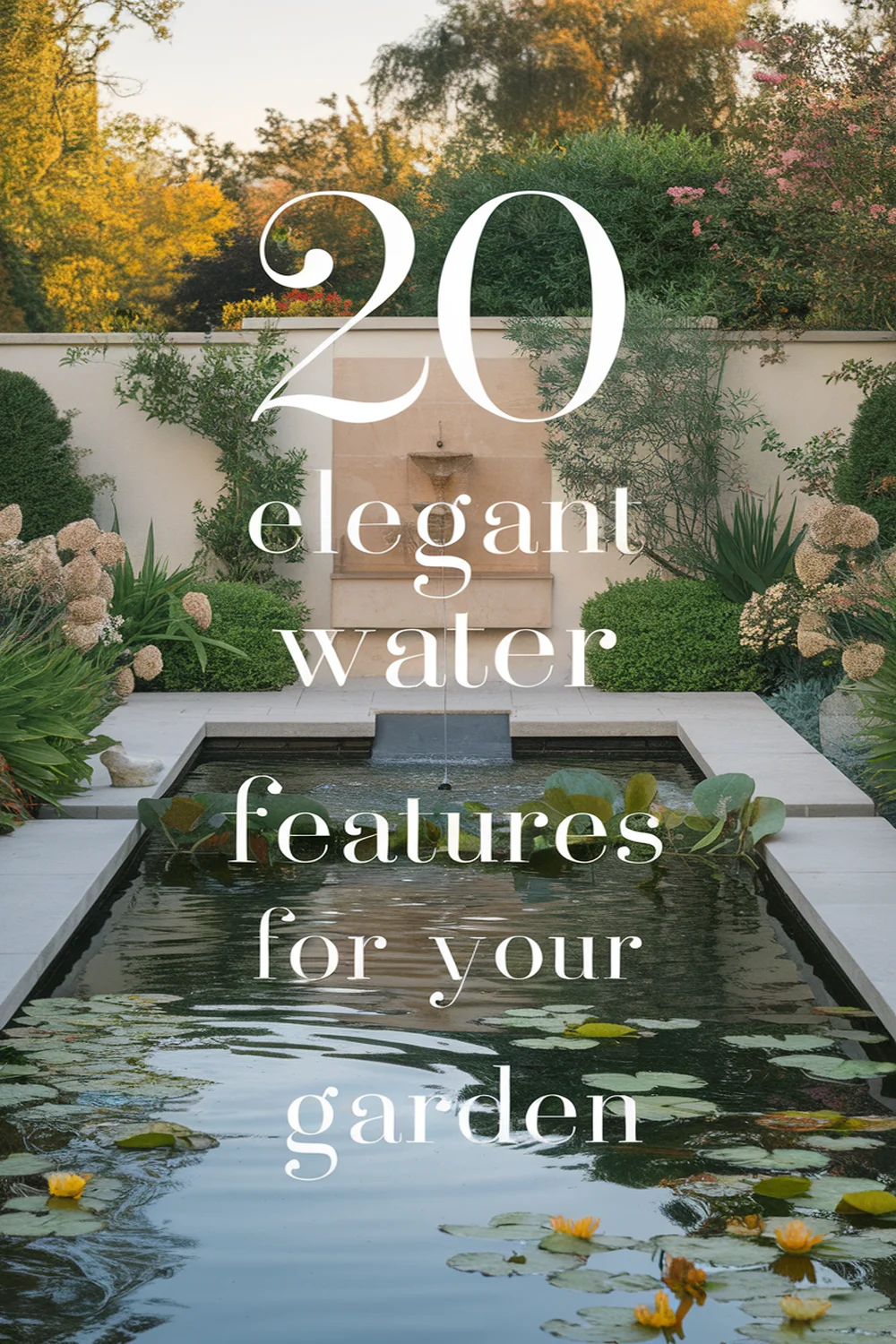This post may contain affiliate links. Please read our policy page.
Transform your backyard into an eco-friendly oasis with sustainable decor ideas! Start by choosing native plants for biodiversity, then utilize upcycled materials like wooden pallets and glass bottles for unique accents. Incorporate rainwater harvesting systems for efficient watering and build a compost bin to recycle nutrients. Create pathways with reclaimed materials and design vertical gardens for space efficiency. Add natural garden art and sculptures to enhance your green space’s beauty. Explore more creative ways to make your garden flourish!
Choose Native Plants for Biodiversity
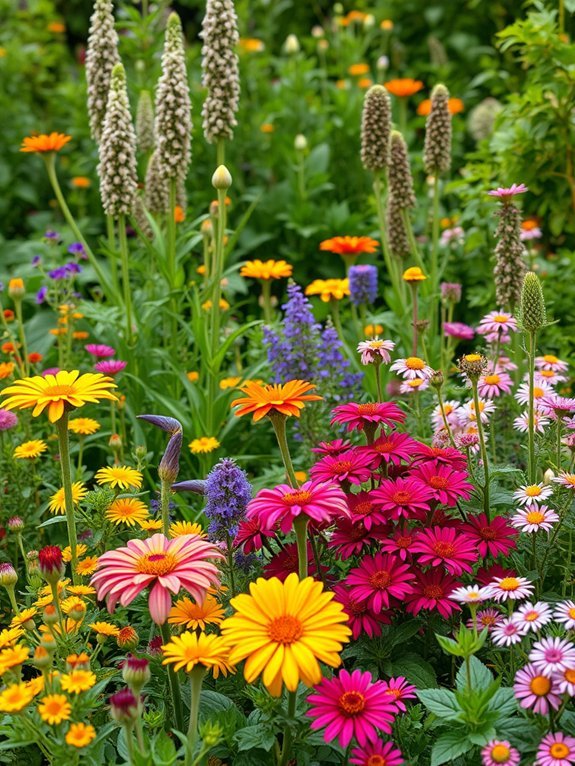
When you choose native plants for your garden, you’re not just adding beauty; you’re also boosting local biodiversity. Native plants thrive in your region’s climate and soil, making them easier to maintain. They require less water and fewer chemicals, which reduces your environmental footprint. By planting natives, you provide food and habitat for local wildlife, including pollinators like bees and butterflies. Plus, you’ll create a vibrant tapestry of color and texture throughout the seasons.
Start by researching plants indigenous to your area—local extension services or native plant societies are great resources. By selecting a mix of perennials, shrubs, and grasses, you’ll create a sustainable garden that supports the ecosystem while bringing joy to your outdoor space. Your garden can truly make a difference!
Utilize Upcycled Garden Decor
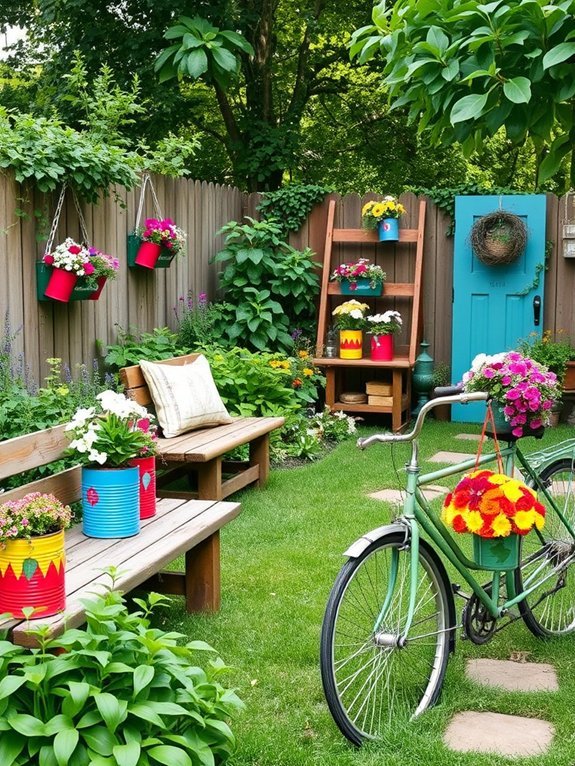
While creating a sustainable garden, you can add personality and charm by utilizing upcycled garden decor. Think about repurposing old wooden pallets into vertical planters, giving your plants a stylish home while conserving space. Use glass bottles as colorful plant markers or cut them to create unique garden borders. Old tires can serve as planters or seating options, adding character and a touch of whimsy. You could even transform discarded furniture into one-of-a-kind garden benches. Don’t forget about using aged pots and containers for your herbs or flowers, enhancing rustic appeal. By incorporating these unique finds, you’ll not only reduce waste but also create a vibrant, eco-friendly environment that reflects your creativity. Happy upcycling!
Incorporate Rainwater Harvesting Systems
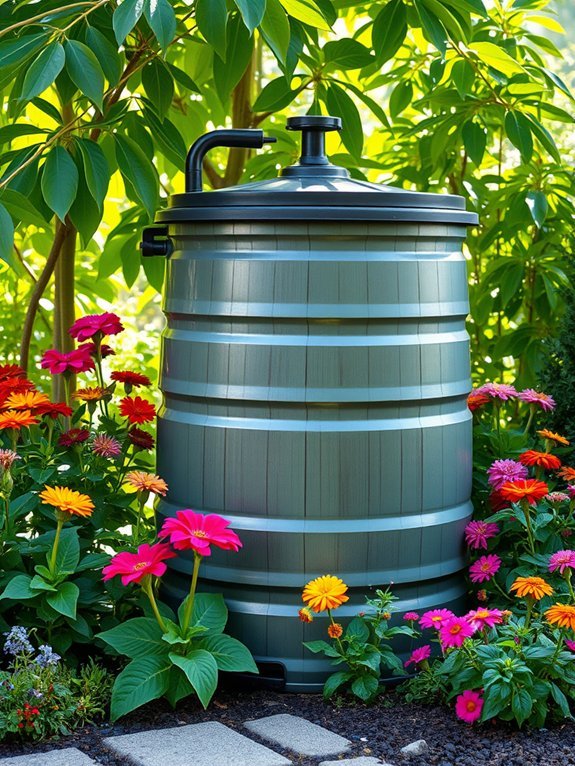
Adding a rainwater harvesting system can greatly elevate your sustainable garden, as it allows you to efficiently collect, store, and use rainwater for your plants. Installing a simple rain barrel beneath your downspout is a great starting point. When it rains, the barrel fills, giving you a reservoir of natural water ready for your garden.
You can use this precious resource to hydrate your plants, reducing dependency on municipal water and saving money.
Consider adding a drip irrigation system connected to your barrel for targeted watering, which conserves even more water. Plus, it’s eco-friendly! With a rainwater harvesting system, you’ll cultivate a thriving garden while actively conserving resources, ensuring your backyard flourishes in harmony with nature.
Build a Compost Bin for Nutrient Recycling
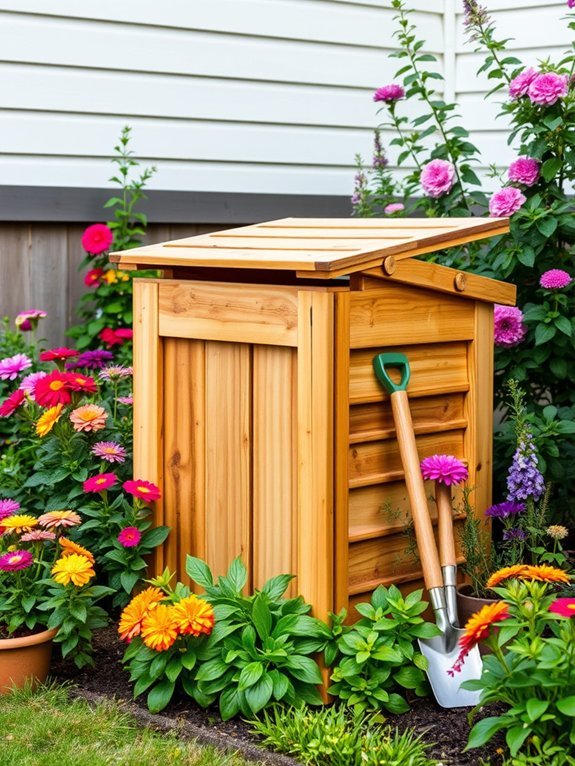
To complement your rainwater harvesting efforts, building a compost bin is a fantastic way to recycle organic materials and enrich your garden’s soil. Start by selecting a spot that’s easily accessible yet discreet. You can use wooden pallets, wire mesh, or old barrels to create your bin. Layer green materials like vegetable scraps with brown materials like dried leaves for balanced decomposition. Remember to turn the pile regularly to aerate it and speed up the composting process. In about three to six months, you’ll have nutrient-rich compost ready to mix into your soil. Not only will this boost your plants’ health, but it’ll also reduce waste going to landfills, making it a win-win for your garden and the environment!
Recommended Items
Get ready to transform your backyard with our favorite sustainable decor options!
Create Pathways With Reclaimed Materials
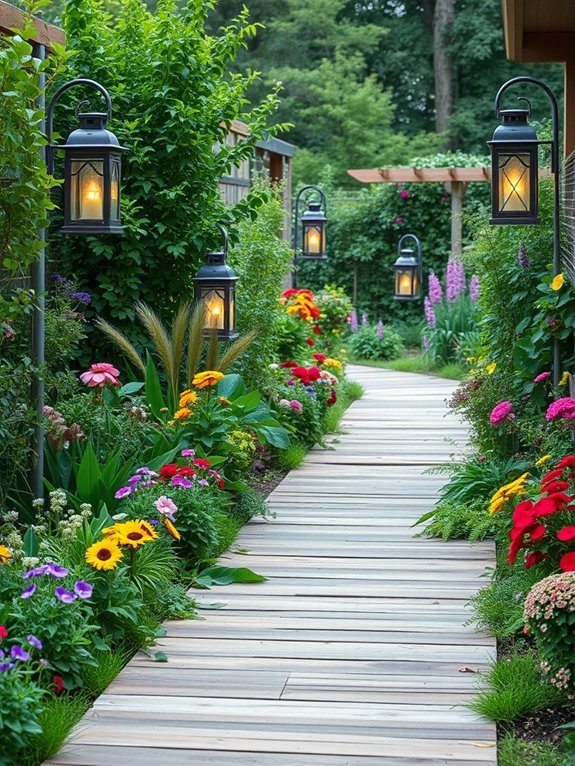
Transforming your garden with pathways crafted from reclaimed materials not only enhances its charm but also promotes sustainability. Consider using old bricks, stones, or even wooden pallets to create unique pathways. You can repurpose materials from local construction sites or salvage yards, saving them from landfills.
Start by planning your pathway layout—curves often feel more inviting than straight lines. Lay down the base with gravel for drainage and stability, then arrange your reclaimed materials in a visually appealing manner.
Don’t forget to incorporate plants along the sides to soften the edges and create a natural look. Keeping your design functional is key, so ascertain the path is wide enough for easy navigation. Enjoy your eco-friendly garden stroll!
Use Solar-Powered Lighting Solutions
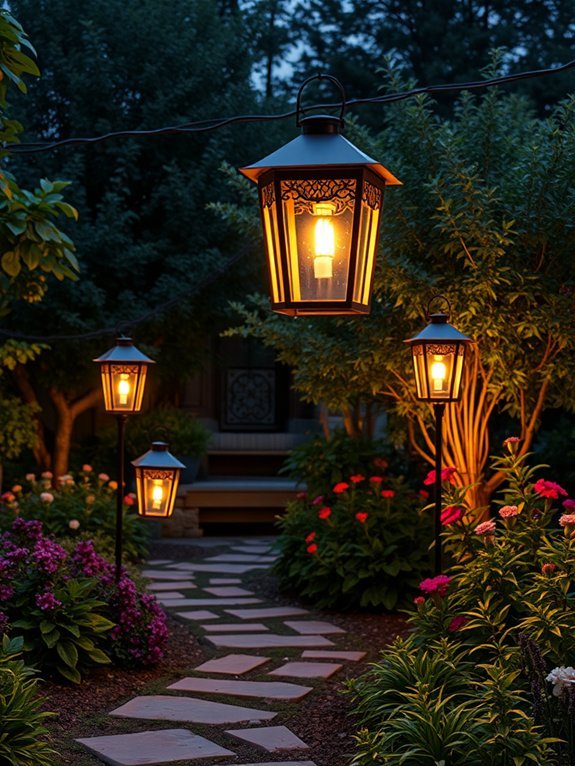
Pathways illuminated by solar-powered lighting can truly elevate your garden’s ambiance as evening falls. These eco-friendly lights harness the sun’s energy, reducing your carbon footprint while enhancing your outdoor space. Installing them requires minimal effort, making them a hassle-free option for every gardener.
Consider these creative ideas:
- Path lights to guide your way
- String lights for a whimsical touch
- Spotlights to highlight your favorite plants
- Solar lanterns for added charm
- Recessed lights along deck edges for a sophisticated look
With a variety of styles available, you can easily find the perfect solar lights to suit your garden’s aesthetic. Let your garden shine bright, sustainably!
Design Vertical Gardens for Space Efficiency

Have you ever considered how much more you could grow in your garden if you utilized vertical space? Designing vertical gardens is a fantastic way to maximize your area and create a stunning green wall. Start by choosing a sturdy structure, like a trellis or vertical planter, that suits your style. Select a mix of herbs, flowers, or even vegetables that thrive in upward growth. Make sure to arrange plants with shorter ones in front and taller ones in back for ideal light. Incorporate drip irrigation systems for easy maintenance and efficient watering. You’ll not only save space but also create an eye-catching feature that adds depth and life to your backyard. Embrace vertical gardening—your garden will thank you!
Task Overview for Sustainable Garden Decor
Opt for Organic Mulching Techniques
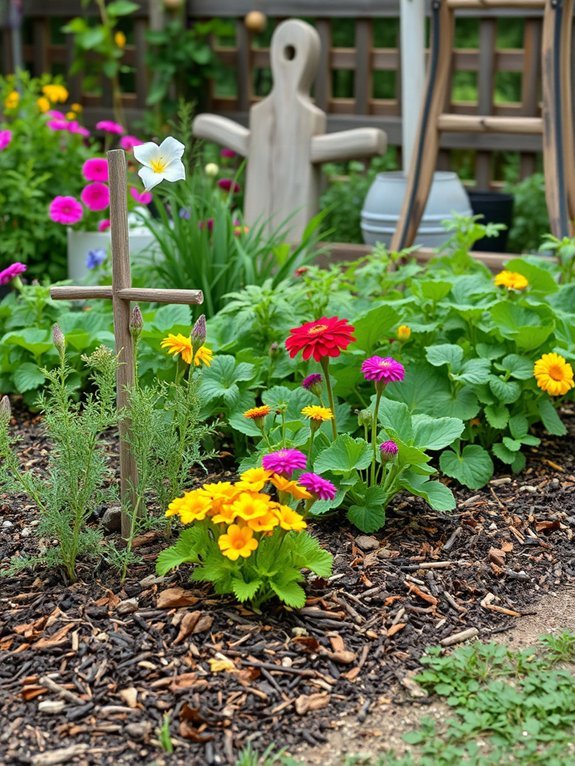
While you might think of mulch simply as a way to keep your garden tidy, opting for organic mulching techniques can greatly enhance the health of your plants and soil. Organic mulches, unlike their synthetic counterparts, break down over time, enriching the earth with nutrients. They help retain moisture, suppress weeds, and promote beneficial organisms. Here are some organic mulching options to evaluate:
- Wood chips
- Straw
- Grass clippings
- Pine needles
- Shredded leaves
Choose the right mulch for your garden’s needs, and reapply it annually to maintain its effectiveness. Not only will your garden thrive, but it’ll also look beautiful and eco-friendly. So, grab some organic materials and transform your backyard into a sustainable paradise!
Implement a Pollinator-Friendly Space
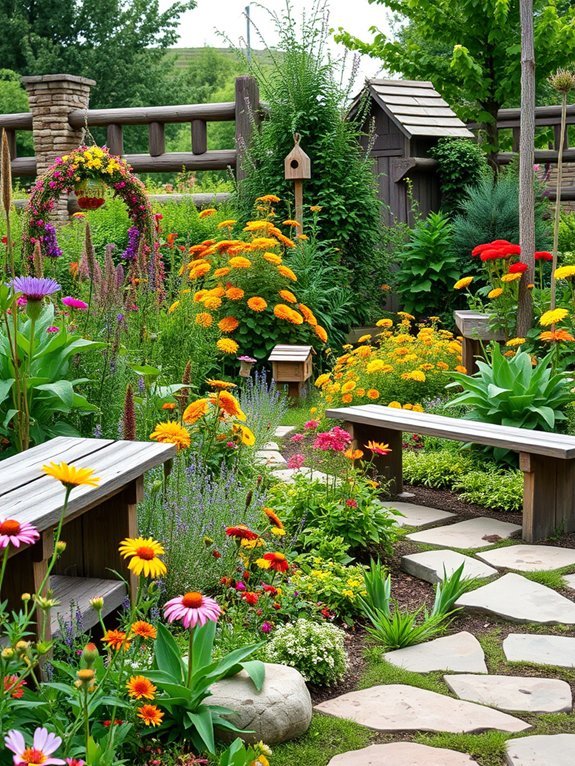
Creating a vibrant, pollinator-friendly space in your garden complements your organic mulching efforts beautifully. Start by selecting native plants like coneflowers and bee balm, which attract bees, butterflies, and hummingbirds. Arrange these plants in clusters to create a visually striking oasis, providing ample nectar and pollen. Remember to avoid pesticides; they can harm beneficial pollinators. Instead, consider companion planting to naturally repel pests. Incorporate water sources, like a shallow birdbath, to offer hydration for tired pollinators. Finally, add sheltering features, such as a bee hotel or brush pile, to encourage your guests to linger. Embracing these elements helps support the local ecosystem while making your garden a thriving, buzzing environment.
Introduce Natural Garden Art and Sculptures
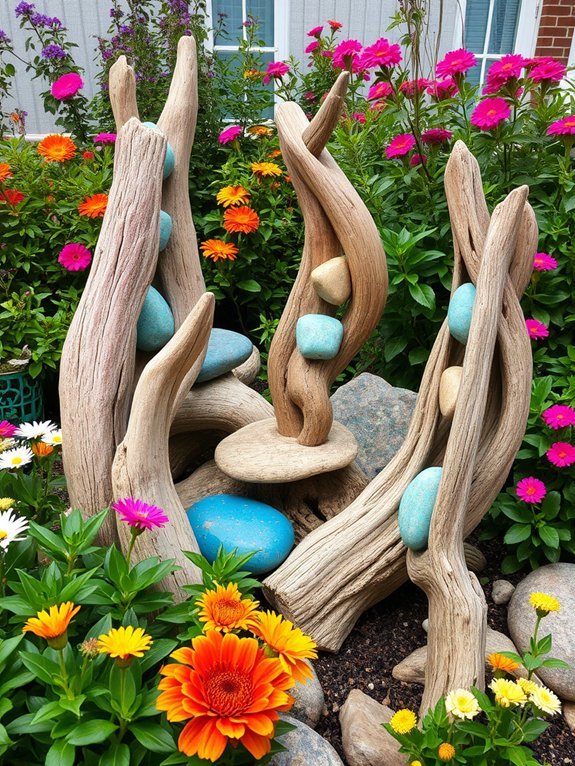
To enhance the natural beauty of your garden, integrating art and sculptures made from organic materials can transform your outdoor space into a mesmerizing sanctuary. These unique additions not only express your personal style but also blend harmoniously with the surroundings. Consider these ideas:
- Handcrafted wooden totems for a rustic touch
- Stone sculptures that evoke local wildlife or flora
- Recycled metal art pieces for an industrial vibe
- Terracotta pots arranged artistically for vibrant color
- Bamboo structures that serve as both art and support for plants
Choosing natural materials connects your garden to nature and fosters an eco-conscious mindset. With thoughtful selections, you’ll create a dynamic space that celebrates creativity and sustainability!


